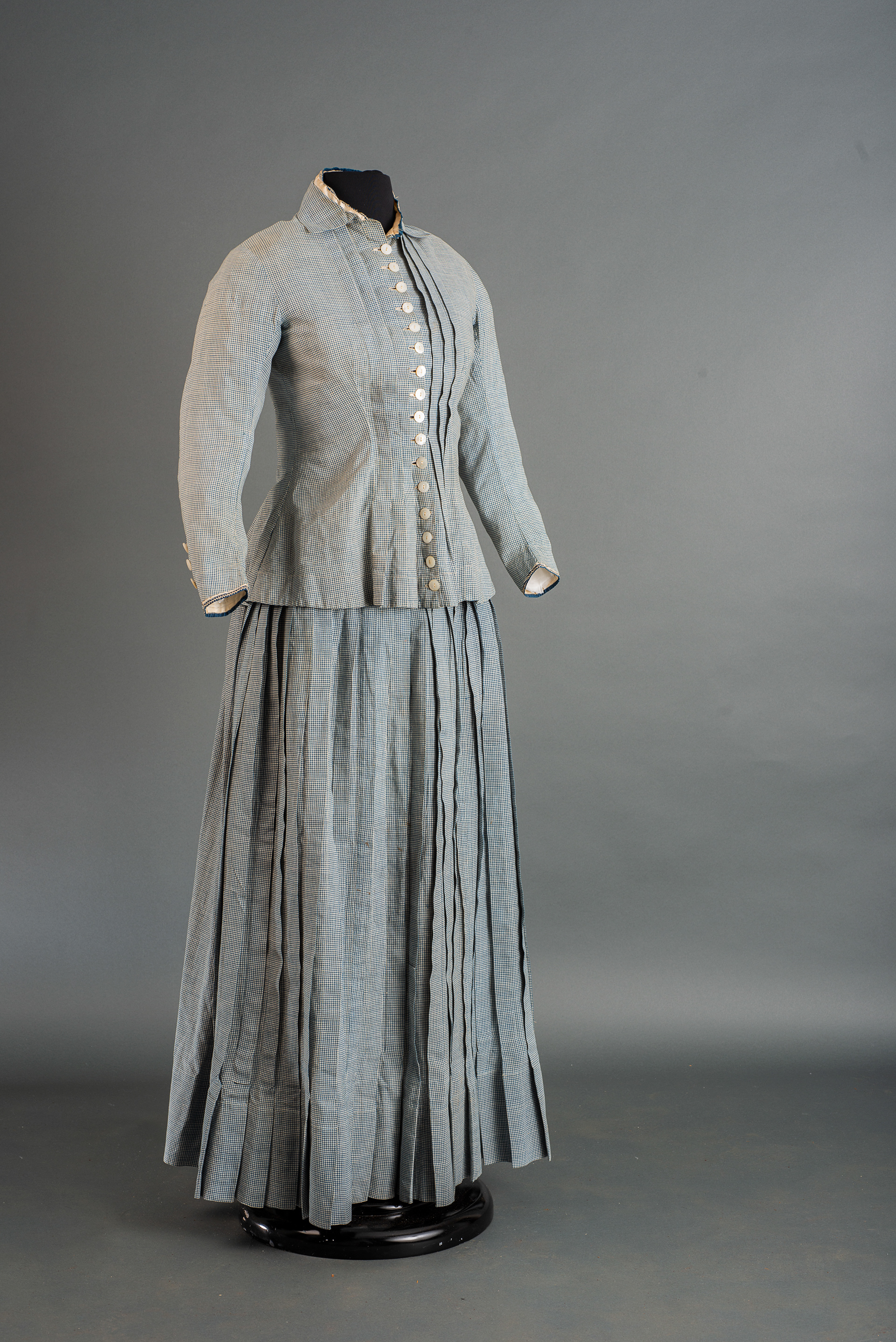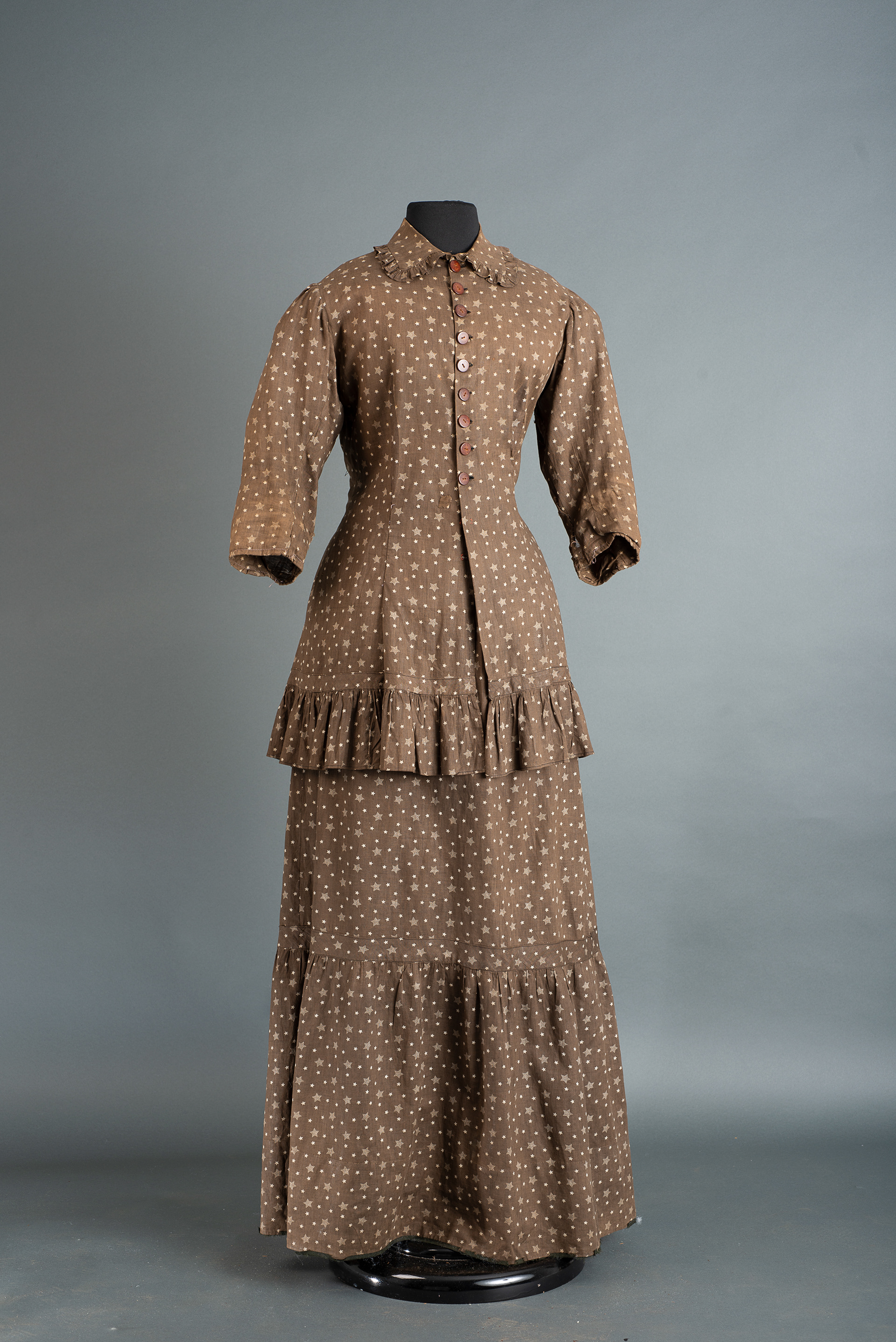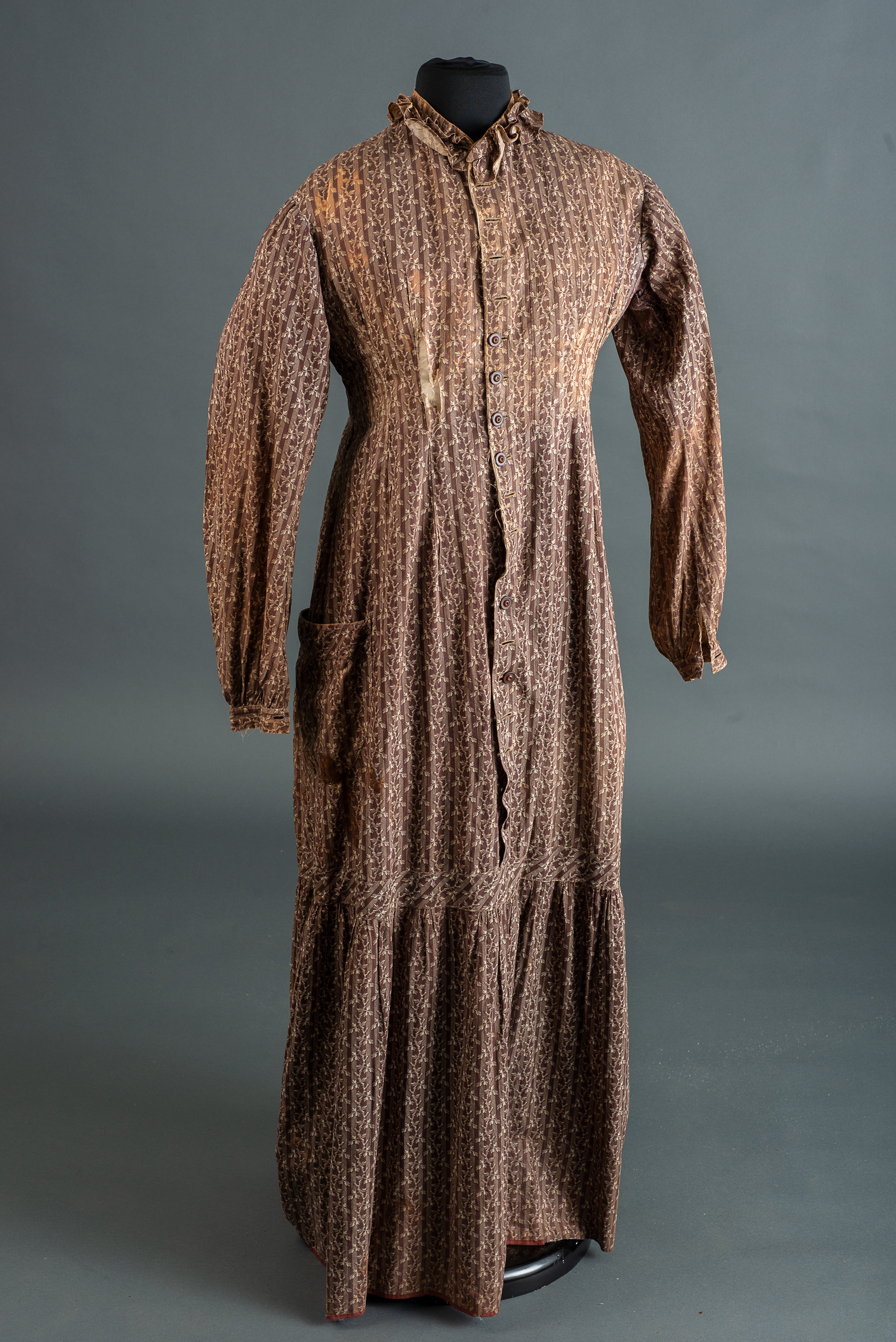The Summer Dress
1880-1885
Lightweight cotton dresses like this one were popular for the summer; in fact this blue and white gingham dress could have been worn to the beach. Due to this dress being made out of light-weight cotton, it would not be too warm for the hot weather. Pleating was a popular technique that is visible in this dress, which can be seen in both the bodice and the skirt. This dress would be accompanied with a bustle, which was experiencing a revival in the beginning of the decade. This dress bodice is the style called basque, a tight fitting bodice that flares at the hips. This dress would be worn when the woman appeared in the public sphere.
The Work Dress
1880-1885
The motif on this dress consists of adorable white stars on a brown background. This cotton dress is a work dress, due to its loose fitting nature and ability to hide dirt and stains. It had very loose fitting sleeves that made it easy for the woman to move her arms. This dress is fitted with princess seams, which made the shape of the dress loose and comfortable. This dress does not have any boning which makes it less restrictive than many other styles. The bodice of this dress is also a basque bodice, due to its long loose fit. This dress was worn often the woman who owned it, Mrs. Billings, had patched it so she could continue wearing it even in its deteriorating condition.
Comparing The Summer Dress And The Work Dress
The green day dress and the stylized leaf work dress are vastly different pieces. The work dress had a purpose of being loose and not restrictive. It was designed for a woman who had to do hard work, while the green dress is beautiful but too restrictive to be functional. The sleeves are tightly fitted all around the arm and continue to be fitted under the shoulder puff, making arm movement limited. While the green dress is much more fashionable, the work dress is more practical.

Summer Dress

Work Dress

Tea Gown

